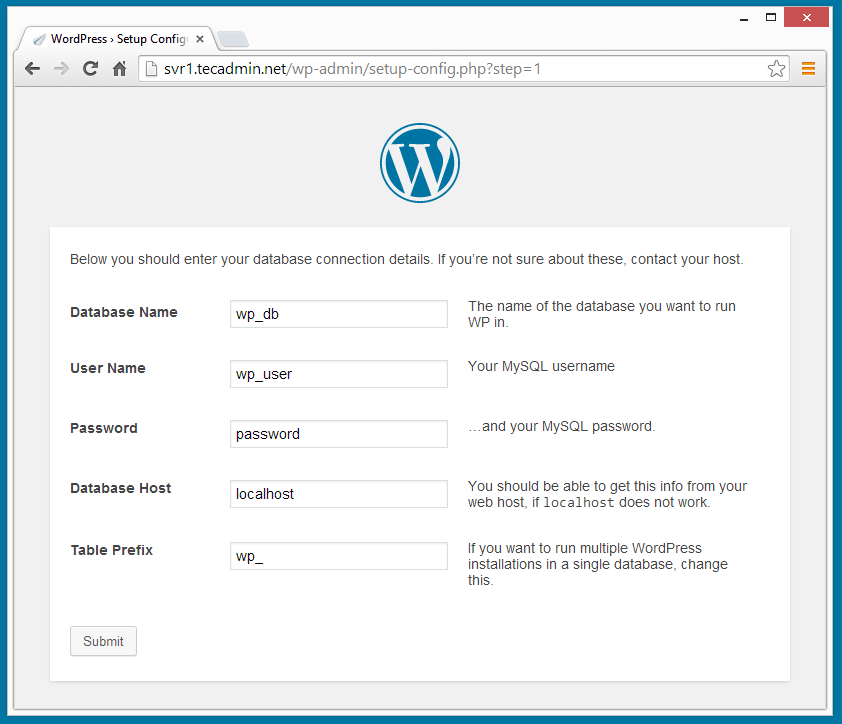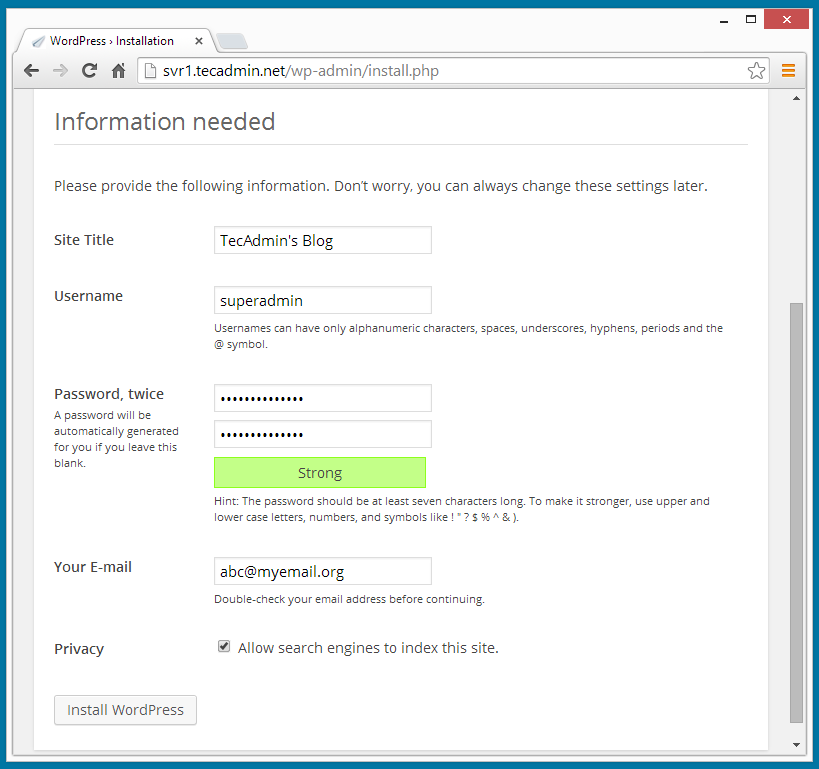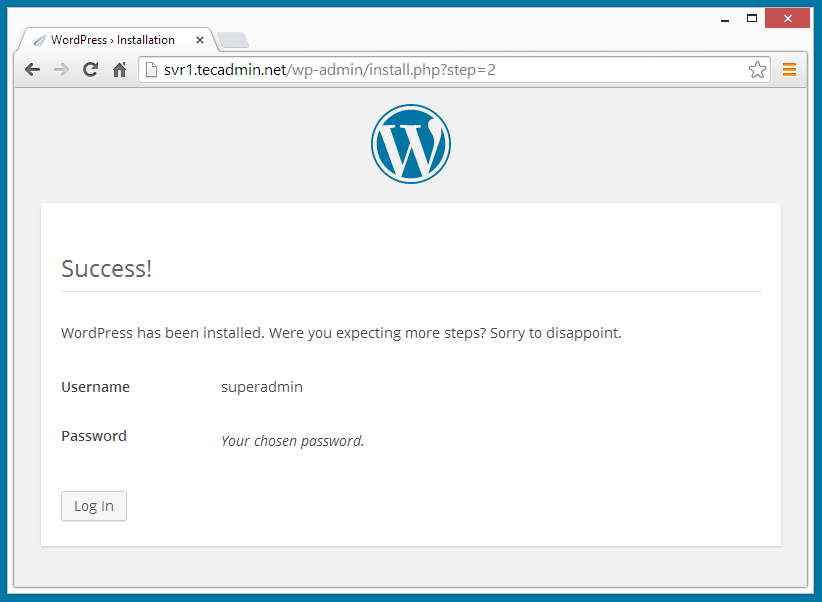Step 1 – Setup LEMP Stack
First we will add all required PPA to our system. Following commands will add PPA for Nginx, PHP5 and MySQL on your system.$ echo "deb-src http://nginx.org/packages/mainline/ubuntu/ `lsb_release -cs` nginx" >> /etc/apt/sources.list $ echo "deb http://nginx.org/packages/mainline/ubuntu/ `lsb_release -cs` nginx" >> /etc/apt/sources.list $ sudo apt-get install python-software-properties $ sudo add-apt-repository -y ppa:ondrej/mysql-5.5 $ sudo add-apt-repository ppa:ondrej/php5and now use following commands to install Nginx web server, PHP5 with PHP5-FPM and MySQL server.
$ curl http://nginx.org/keys/nginx_signing.key | apt-key add - $ sudo apt-get update $ sudo apt-get install nginx php5 php5-fpm mysql-server php5-mysql
Step 2 — Configure PHP-FPM
PHP-FPM (FastCGI Process Manager) is an alternative PHP FastCGI implementation with some additional features.$ sudo nano /etc/php5/fpm/php.iniun-comment cgi.fix_pathinfo=1 line and set value to 0.
cgi.fix_pathinfo=0Now set the listen parameter in /etc/php5/fpm/pool.d/www.conf configuration file. Here you can use php5-fpm socket to work or start php5-fpm server on any port as service. We are going to use it as service.
$ sudo nano /etc/php5/fpm/pool.d/www.confNow make changes in configuration file as below. Commend listen with socket file and enable it as service
#listen = /var/run/php5-fpm.sock listen = 127.0.0.1:9000
Step 3 — Download and Configure WordPress
Download latest WordPress archive file from its official website using following command.$ wget http://wordpress.org/latest.tar.gzExtract archive in document root of you domain and update permissions on files.
$ tar xzf latest.tar.gz $ sudo mv wordpress /var/www/example.com $ sudo chown -R apache.apache /var/www/example.com $ sudo chmod -R 755 /var/www/example.com
Step 4 — Create MySQL Database and User
After extracting WordPress codebase, Let’s create a mysql database and user account for configuring WordPress. Use following set of command to do it$ mysql -u root -p Enter password: mysql> CREATE DATABASE wp_db; mysql> GRANT ALL ON wp_db.* to 'wp_user'@'localhost' IDENTIFIED BY '_secret_password_'; mysql> FLUSH PRIVILEGES; mysql> quit
Step 5 — Configure Nginx VirtualHost
Finally do the configuration of Nginx server block (Virtual Host). For this example we are creating a new configuration file for our domain example.com.$ sudo nano /etc/nginx/conf.d/example.com.confand make changes as below.
server { listen 80; root /var/www/example.com; index index.php index.html; server_name example.com www.example.com; location / { try_files $uri $uri/ /index.php?q=$request_uri; } error_page 404 /404.html; error_page 500 502 503 504 /50x.html; location = /50x.html { root /usr/share/nginx/www; } location ~ .php$ { try_files $uri =404; fastcgi_pass 127.0.0.1:9000; fastcgi_index index.php; fastcgi_param SCRIPT_FILENAME $document_root$fastcgi_script_name; include fastcgi_params; } } After installing all services on your system, start all required services.$ sudo service nginx restart $ sudo service php5-fpm restart
Step 6 — Start WordPress Web Installer
WordPress provides a web installer for easy to setup WordPress without editing files manually. After completing above steps just point your browser to your domain. Fill the database details and click “
After submitting database details, click on “

- Blog Title
- Username of admin account (for security do not use as “admin”)
- Admin password ( twice )
- Email ID

After completing above step, You have installed WordPress successfully, Now you will get WordPress success installation message.

Comments
Post a Comment